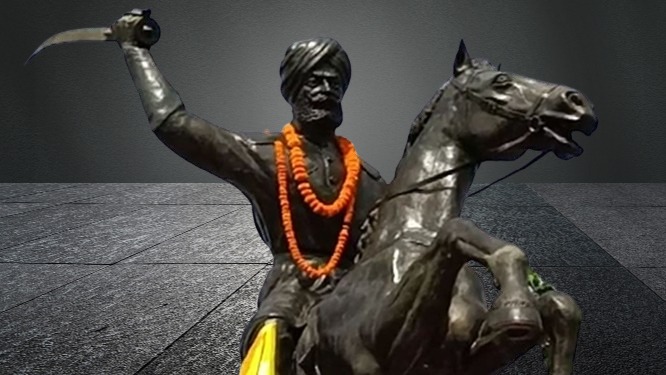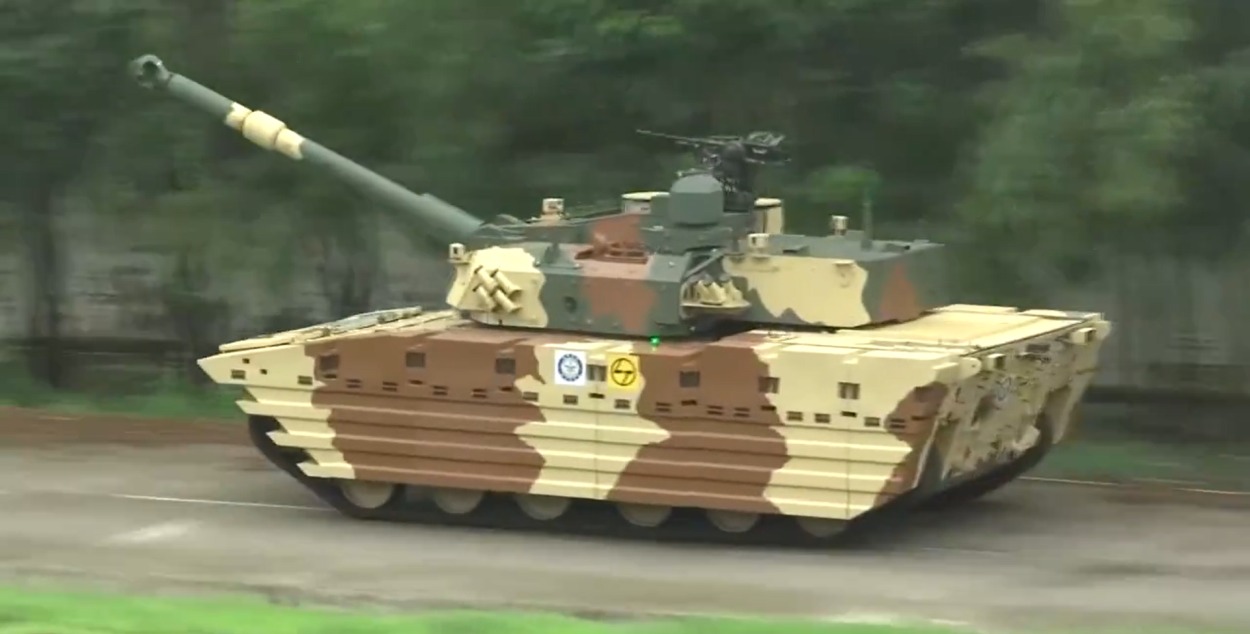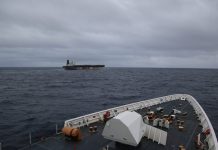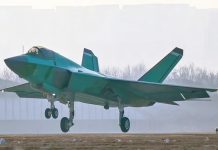India recently showcased the ‘Zorawar’ light battle tank, designed for high-altitude warfare. Jointly developed by the DRDO and Larsen & Toubro (L&T) Limited, Zorawar is tailored to meet the Indian Army’s needs in the eastern Ladakh sector, addressing Chinese deployments across the Line of Actual Control (LAC).
This is India’s first indigenously designed and developed light tank, intended to counter China at high altitudes. In both mobility and firepower accuracy, it is expected to surpass the Chinese Type 15 tanks deployed along the Ladakh border.
The name ‘Zorawar’ translates to ‘strong and powerful,’ embodying the essence of formidable strength and resilience.
The Threat Of China & Project Zorawar
The clashes between India and China on the Line of Actual Control in Galwan in June 2020, which resulted in the deaths of 20 Indian soldiers and at least four Chinese soldiers, significantly strained relations between the two nations.
Forget J-20, China’s H-20 Stealth Bomber Threatens ‘Easy Penetration’ Of LAC; How Can IAF Respond?
During this period, the Indian Army encountered challenges with the rapid deployment of tanks. The existing tanks were too heavy, complicating their airlift to the frontline.
Additionally, these tanks were not suited for the high-altitude terrain of Ladakh. Compounding the problem, the Chinese People’s Liberation Army (PLA) had deployed numerous advanced lightweight tanks in the region, putting Indian forces at a disadvantage.
To address these issues, the Indian Army required a tank weighing no more than 25 tonnes, capable of being easily airlifted to forward positions in Ladakh, and well-suited for the challenging conditions. Consequently, the Indian government approved ‘Project Zorawar’ in March 2022.
Drawing from the lessons of the Indo-China standoff in Galwan, the tank was named “Zorawar” to honor the 19th-century Dogra warrior and military strategist General Zorawar Singh Kahluria.
Revered as the “Napoleon of India” and the “Conqueror of Ladakh,” General Zorawar led numerous successful campaigns in Ladakh and Baltistan.
233 Gurkha Soldiers Held Hostage — How Indian Army Launched Operation Khukri & Stunned The Opponents
General Zorawar Singh Kahluria
General Zorawar Singh Kahluria, often revered as a valiant warrior and military leader, played a significant role in the history of the Dogra region, particularly in the early 19th century.
Born in 1784 (though some sources claim 1786) in the Kahlur region, present-day Bilaspur district in Himachal Pradesh, India, Zorawar Singh belonged to the Kahluria clan of Rajputs.
Zorawar Singh began his military career in the service of Raja Sansar Chand II of the princely state of Jammu and Kashmir. His bravery, strategic acumen, and leadership skills quickly propelled him through the ranks. One of his most notable achievements was his extensive military campaigns to expand the borders of the Sikh Empire under Maharaja Ranjit Singh, the founder of the Sikh Empire.
Conquest Of Ladakh & Western Tibet
Zorawar Singh is renowned for his bold expeditions into Ladakh, then part of the Tibetan Empire. In 1834, he led a campaign to conquer Ladakh on behalf of Maharaja Gulab Singh of Jammu and Kashmir. Over the following years, he carried out multiple campaigns in the region, successfully capturing crucial towns and fortresses.
In 1834, the Raja of Timbus sought Raja Gulab Singh’s help against the Ladakhi King. Seizing the opportunity, Raja Gulab Singh ordered his capable commander, Zorawar Singh, to march into Ladakh.
As the General of Jammu, Zorawar Singh launched Trans-Himalayan campaigns starting in April 1834 with an army of 5,000 men. Within eight years, he conquered Ladakh, Gilgit-Baltistan, and Western Tibet.
Zorawar’s campaigns faced numerous challenges due to the harsh terrain, extreme weather conditions, and resistance from local rulers. Despite these obstacles, he displayed exceptional leadership and determination.
In the spring of 1835, he defeated an army of 22,000 troops led by General Kahlon and marched his victorious forces to Leh. The panic-stricken King sued for peace.
According to the agreement, he was retained as King, with Ladakh becoming a vassal state of the Dogra Kingdom. Shortly after the peace agreement, the Chief of Sod rose in arms against the Dogras. General Zorawar Singh swiftly suppressed the revolt and triumphantly returned to Jammu at the end of 1835. This is considered one of General Zorawar Singh’s greatest victories.

Tibet Sought China’s Help
Having consolidated his reign in Gilgit-Baltistan, Raja Gulab Singh revived an ancient Ladakhi claim over Western Tibet. In May 1841, he dispatched General Zorawar Singh to enter the highlands of Tibet with 5,000 men. Leading a diverse army of Dogras, Ladakhis, and Baltis, Zorawar swept across the roof of the world.
Sweeping aside all resistance along the way, Zorawar Singh passed Mansarovar Lake and converged at Gartok. The Tibetan commander fled to Taklakot, and Zorawar Singh stormed Taklakot Fort in September 1841, capturing the strategic city.
Envoys from Tibet and Nepal met the General at Taklakot to negotiate peace. Unexpectedly, in November, a composite army of 10,000 Chinese and Tibetans marched to Taklakot to drive the Dogras from Tibet.
This turned out to be Zorawar Singh’s final expedition into Tibet in 1841. Unfortunately, during this campaign, Zorawar, who was 57 years old at the time, encountered severe hardships, including shortages of supplies and extreme weather conditions. He was unable to receive reinforcements from Leh or elsewhere due to heavy snow blocking all the passes.
Temperatures had fallen to minus 50 degrees Celsius due to sweeping blizzards. Despite these conditions, the Dogras put up a tough fight. However, in December 1841, Zorawar Singh was fatally wounded in the Battle of Toyo by the combined forces of Tibetans and Chinese.
The death of their commander decided the outcome of the battle. Living up to their bravery, the Dogras executed the enemy General to avenge their commander’s martyrdom.
Although this great conqueror fell during the campaign, his efforts were not in vain. In September 1842, a treaty was signed between representatives of the Chinese and Lhasa governments on one side and the Khalsa Darbar and Gulab Singh on the other. This treaty extended the Sikh, and subsequently Indian, frontiers to their current international boundary, thereby incorporating all of Ladakh into Indian territory.

A Legend That Endures
Today, Zorawar Singh’s memory lives on in ways both grand and unexpected. In Tibet, a memorial stands where pregnant women pray for sons as brave as the Indian general.
In his book Kailash – Jewel of the Snows, Rajinder Arora describes the Kailash Yatra and highlights that Zorawar Singh’s Samadhi remains at the site of his death. Remarkably, even today, Chinese soldiers are acquainted with his name.
And now, a tank bears his name, ready to defend the very lands he once conquered. The “Zorawar” light tank, nimble yet powerful, stands as a modern incarnation of the warrior’s spirit – a testament to India’s resolve to protect its Himalayan frontier.
From the 19th-century battlefields to the 21st-century arms race, the legacy of ‘Zorawar’ continues to shape the destiny of nations atop the world’s highest battlefield.
- Shubhangi Palve is a defense and aerospace journalist. Before joining the EurAsian Times, she worked for E.T. Prime. In this capacity, she focused on covering defense strategies and the defense sector from a financial perspective. She offers over 15 years of extensive experience in the media industry, spanning print, electronic, and online domains.
- Contact the author at shubhapalve (at) gmail.com




